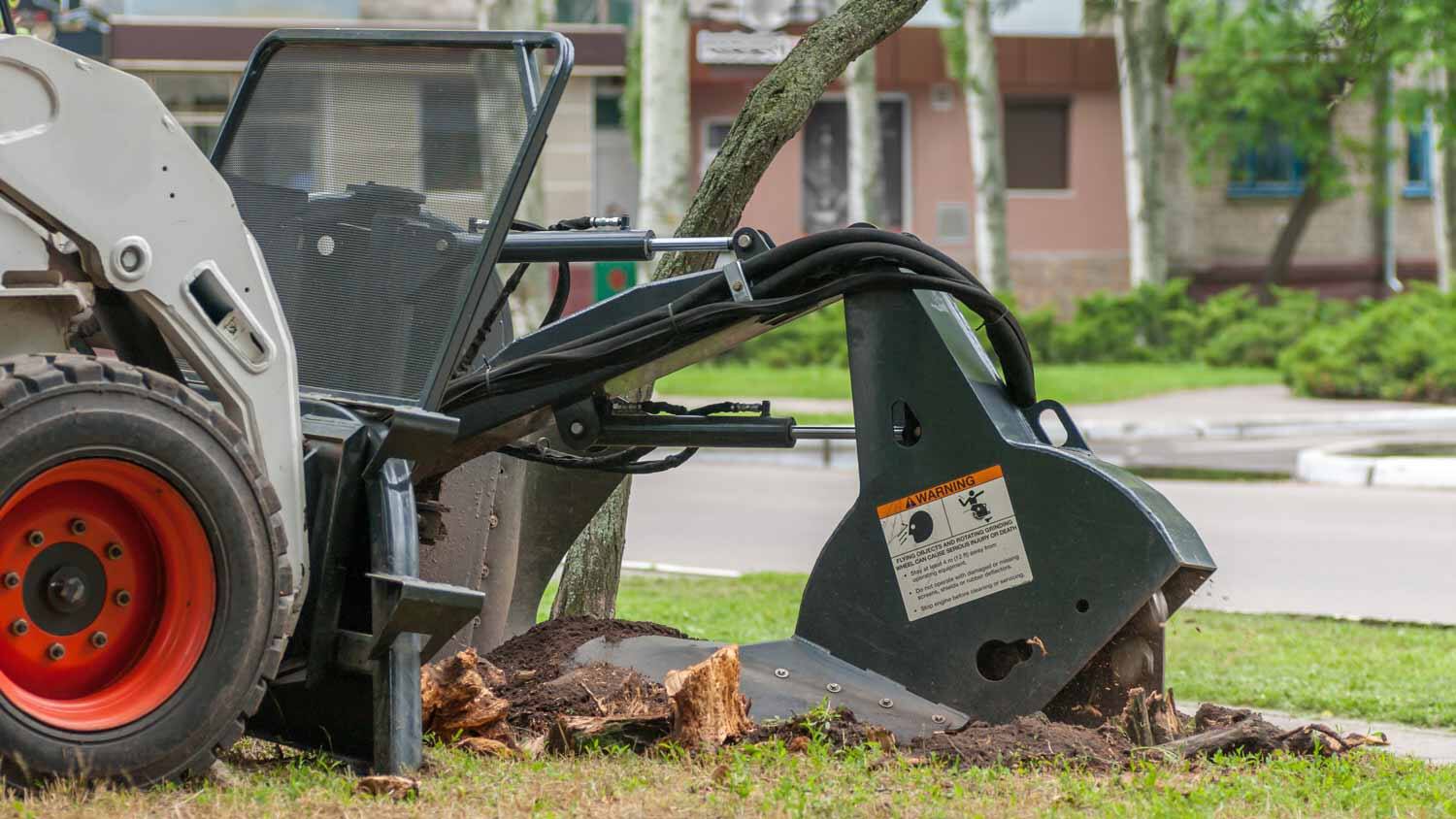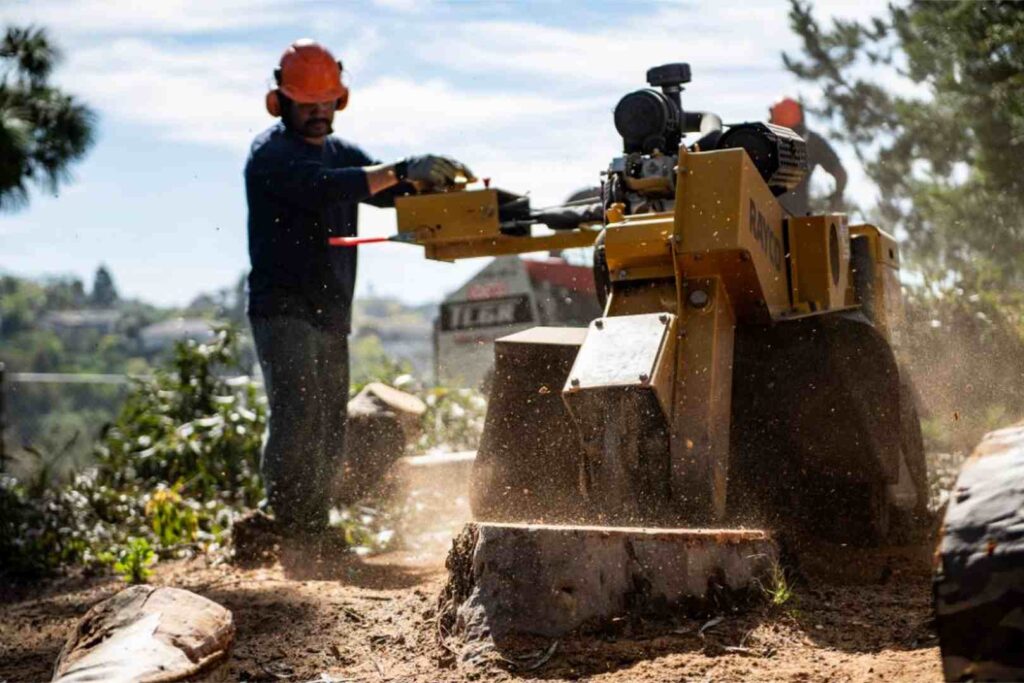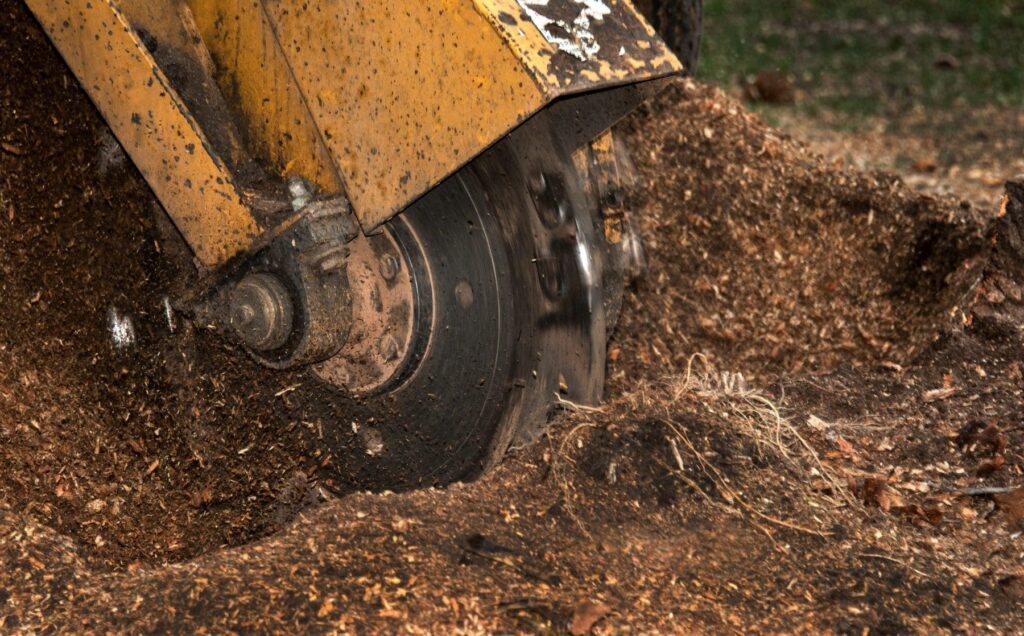
Stump Grinding vs. Removal: Which is Right for Your Sydney Property?

When it comes to dealing with tree stumps on your Sydney property, you have two main options: stump grinding and stump removal. Each method has its own advantages and disadvantages, so it’s important to understand the basics before making a decision.
Understanding the Basics: Stump Grinding and Removal
Stump grinding involves using a powerful grinder to chip away at the stump until it’s ground down to small wood chips. On the other hand, stump removal entails physically digging out the entire stump, including its roots.
When it comes to stump grinding, it’s essential to consider the size and location of the stump. Larger stumps may require more time and effort to grind down completely, while stumps in hard-to-reach areas might pose a challenge for the grinding equipment. Additionally, the depth to which the stump needs to be ground can vary depending on the future use of the area.
What is Stump Grinding?
Stump grinding is a popular method of stump removal that is both efficient and cost-effective. Using a specialized grinder, the stump is gradually reduced to mulch-like particles that can be used as organic compost or garden mulch. One of the advantages of stump grinding is that it eliminates the hassle of excavation and saves time. Visit https://shadowlawnny.com/understanding-the-cost-to-grind-stumps-a-homeowners-guide for understanding the cost to grind stumps.
Furthermore, stump grinding offers environmental benefits by recycling the wood waste into useful mulch that can enhance soil health and moisture retention. This sustainable approach not only clears the land but also contributes to the ecosystem by promoting natural decomposition.
What is Stump Removal?
Stump removal, while labor-intensive, completely removes the stump from the ground. This method involves digging around the roots and using machinery to extract the entire stump. It provides a clean slate for landscaping or construction projects.
It’s important to note that stump removal may leave a void in the ground where the stump once stood. This void can be filled with topsoil and grass seed to restore the area to its original state or prepare it for new plantings. Additionally, the process of stump removal requires careful consideration of underground utilities to avoid any damage during excavation.
Factors to Consider When Choosing Between Stump Grinding and Removal
Several factors should be taken into account when deciding between stump grinding and removal. Let’s explore these factors further:
When it comes to the cost comparison between stump grinding and complete removal, it’s important to consider not just the upfront costs but also the long-term implications. While stump grinding is generally more cost-effective initially, as it avoids expensive landscaping repairs, stump removal might be a better investment in the long run as it eliminates the possibility of regrowth and potential pest infestations that can occur with grinding.
Cost Comparison: Stump Grinding vs. Removal
Stump grinding is generally more cost-effective than complete removal. This is because the equipment required for grinding stumps is less expensive than the machinery needed for complete removal. Additionally, stump grinding avoids costly landscaping repairs since it doesn’t disturb the surrounding area as much as removal.
Another crucial aspect to consider is the environmental impact of each method. Stump grinding produces mulch that can be used as a natural fertilizer, benefiting the soil and surrounding plants. On the other hand, stump removal involves uprooting the entire stump, which can disrupt the ecosystem and soil structure, potentially leading to erosion or nutrient depletion over time.
Time and Effort: Evaluating the Process
Stump grinding is a quicker process compared to stump removal. Grinding usually takes a few hours or less, depending on the size of the stump. In contrast, removal can take longer as it involves digging and extracting the entire stump, which may require more labor and time investment.
Considering the aesthetics of your landscape is also essential when making this decision. Stump grinding leaves behind wood chips and mulch that can be used to fill the hole left by the stump, blending seamlessly into the surroundings. On the other hand, stump removal may leave a large, noticeable gap in your landscape that will require additional landscaping to restore the area to its original state.
Impact on the Landscape: Which Method is Less Destructive?
Stump grinding is a less invasive method that minimizes damage to the surrounding landscape. The grinder can be maneuvered around obstacles like gardens, patios, or fences. Stump removal, on the other hand, may result in significant disruption to the surrounding landscape due to the excavation process.

Pros and Cons of Stump Grinding and Removal
When it comes to dealing with tree stumps on your property, both stump grinding and stump removal have their own set of advantages and disadvantages. Understanding these factors can help you make an informed decision on the best course of action for your landscaping needs.
Advantages of Stump Grinding
- Cost-effective compared to complete removal.
- Quick and efficient process.
- Minimal impact on the surrounding landscape.
- The resulting wood chips can be used for landscaping purposes.
Additionally, stump grinding is an environmentally friendly option as it promotes natural decomposition of the remaining wood underground, enriching the soil over time. This method also eliminates the need for harsh chemicals that may be required for other stump removal techniques.
Disadvantages of Stump Grinding
- The stump remains in the ground, potentially regrowing if not treated correctly.
- May not be suitable for stumps located near structures or in tight spaces.
- Grinding may cause vibrations that can damage nearby structures.
It’s important to note that while stump grinding is a relatively quick process, it may not completely eradicate the stump, leading to potential regrowth or the need for repeat treatments in the future. Careful consideration of the stump’s location and future landscaping plans is crucial when opting for this method.
Advantages of Stump Removal
- Complete elimination of the stump and its roots.
- Creates a clean slate for landscaping or construction.
- Prevents potential regrowth and removes the risk of pests and diseases associated with decaying stumps.
By removing the entire stump and its roots, you can ensure that there is no chance of regrowth and eliminate any potential hazards or eyesores in your outdoor space. This method provides a fresh start for your landscaping projects, allowing for greater flexibility in design and layout.

Environmental Implications of Stump Grinding and Removal
Stump Grinding and Ecosystem Health
Stump grinding has minimal impact on ecosystem health. In fact, the resulting wood chips from the grinding process can be reused as mulch or compost, providing nutrients to surrounding plants and enhancing soil fertility. Additionally, grinding helps promote the growth of new vegetation in the area.
Moreover, the noise generated during the stump grinding process is relatively low, minimizing disturbance to wildlife in the vicinity. This method also eliminates the need for harsh chemicals that are sometimes used in other forms of stump removal, thus reducing the risk of soil and water contamination.
Stump Removal and Soil Quality
Stump removal may cause more disruption to soil quality due to the excavation process. The extensive digging and removal of roots can disturb the soil structure and affect its stability, potentially leading to erosion. Proper soil restoration techniques should be employed after stump removal to ensure soil health and prevent erosion.
Furthermore, the physical act of stump removal can result in compaction of the soil, reducing its ability to absorb water and nutrients. This compaction can hinder the growth of plants in the area and may require additional remediation efforts to restore the soil’s natural balance.
Now that you have a better understanding of stump grinding and removal, as well as their pros and cons, you can make an informed decision based on your specific needs and preferences. Consider factors such as cost, time, impact on the landscape, and environmental implications to choose the method that is right for your Sydney property.
